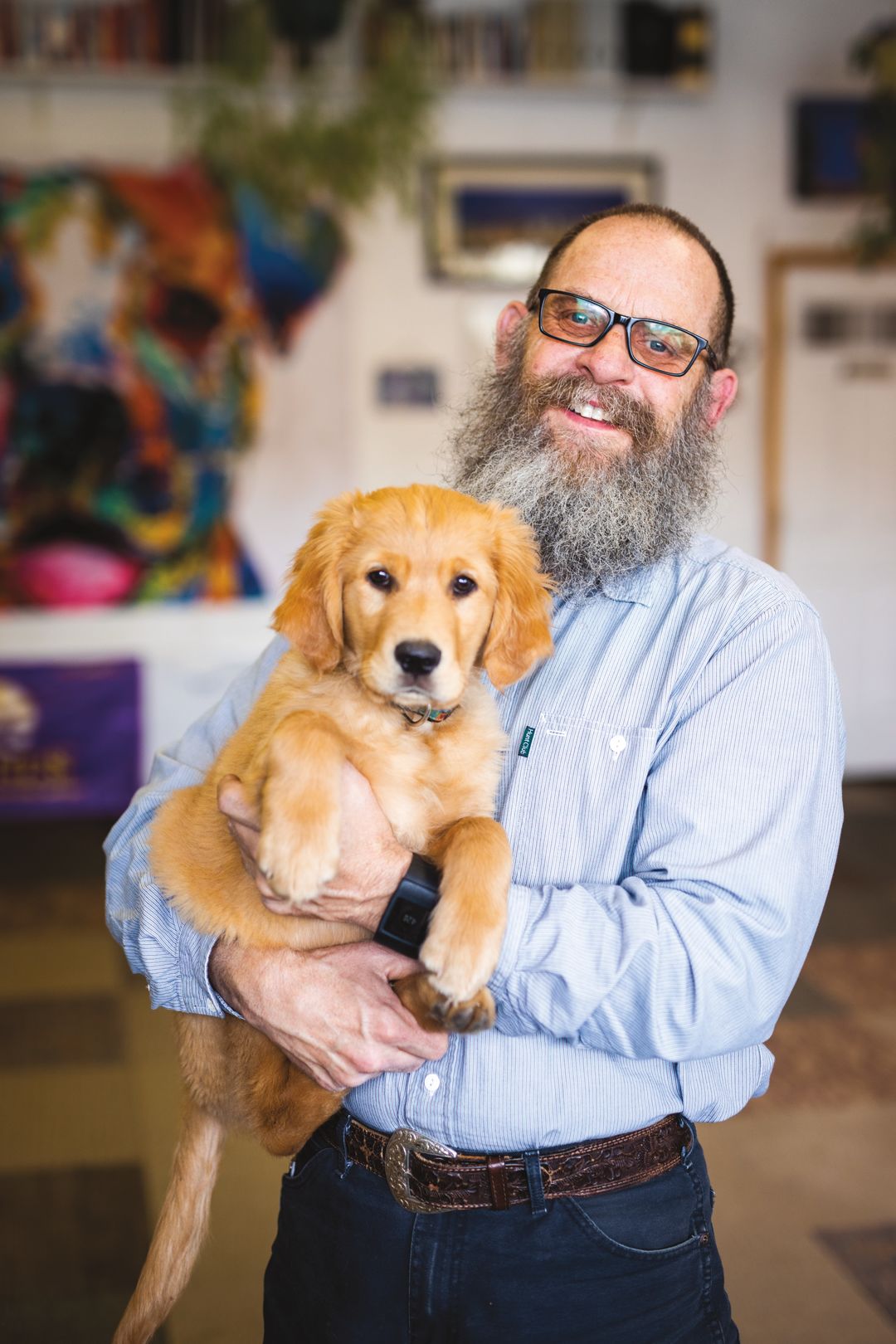The Dog Whisperer of Eagle County

Image: Zach Mahone
"We moved out here in ’91 from Wichita, Kansas. In Wichita, I had worked for a vet as a groomer and vet tech, and then I became manager of the facility and a dog trainer.
The first year I worked at the clinic up there, we figured that we lost something like 20 percent of our new clients because they got rid of their puppies. People would get a dog and it wouldn’t do well in the house, so they’d put it out in the backyard, and it wouldn’t do well in the backyard, so they’d give it to the shelter.
We Started Puppy classes so people would know how to train their puppies and would keep them. And that’s when I really got into the dog stuff. It was this positive outlook for me because dogs here live with people more and need to be trained for that. That’s what I like to do.
Here I do puppy classes for dogs 10–14 weeks of age, we have drop-ins for older puppies, I do privates, I do drop-ins for older dogs, and then I do the Eagle Valley Humane Society class. Any dog that gets adopted gets a free class, and I’ve been doing that since ’95 or ’96 with Eagle County. When I started, we’d have one dog a week; now we have 20–30 dogs a week, and I’ve got some fabulous helpers who are there volunteering every week.
I don’t think every dog needs classes—I really don’t. They need to know the basics (a “sit,” a “down,” a “stand,” a “stay,” a “come,” and being on-leash). They might not need a class, but they need to have training. All dogs need a job—from a Chihuahua to a Great Dane, they all need a job that you can give them to do and entertain themselves. That’s what I tell people; there’s two types of exercise, physical and mental. We’ve got to increase the mental; it’s too easy for us up here to do the physical. There’s always a place to hike, mountain bike, ski, but we need to mentally entertain. Dogs need a sense of purpose—a way that the owner can connect with the dog and form a relationship.
I've had my own dog since I was 12; my first one was an English setter/pointer mix—it was a bird dog. I hunted, and I still have the original book up there on the shelf that I trained her with, Gun Dog. All those books back over there are negative dog training books—that’s how it started; chokers, pinch collars, shock collars, but I don’t do those anymore.
I really think that when we base our training on corrections, we build a wall between us and the dog, and if we don’t trust our dogs, they’re not going to trust us. I did my first dog that way and we had a terrible relationship. She didn’t hunt that great, and the book kept telling me how to correct her to get her past it, and we drifted further apart. Think of it this way: when you start a new job, do they teach you, or do they correct you? That’s what we’re doing with the dogs; we’re not giving them a chance to learn.
I’d love to have that first dog again; she was good, but looking back, I didn’t do a good job. But you live and learn, and that was definitely a precursor for where I am now." markruarkdogtraining.com






































